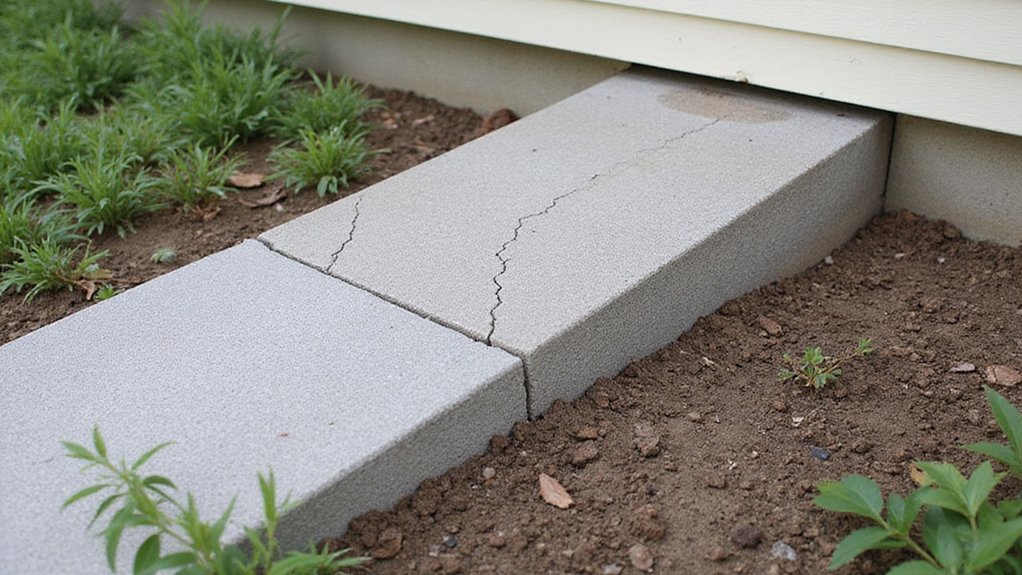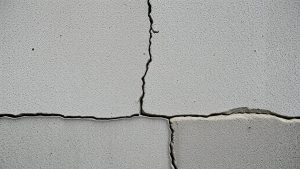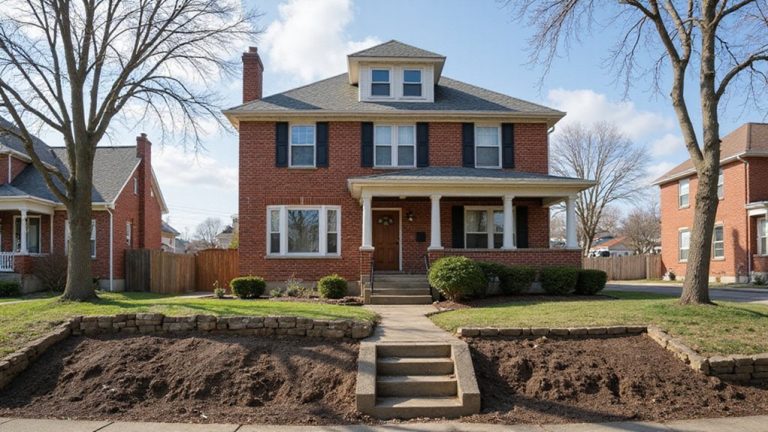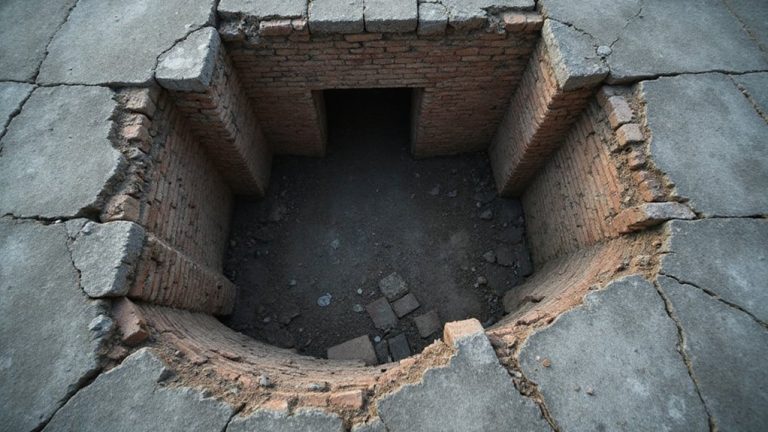Recognizing the early warning signs of foundation settlement is vital for safeguarding your home’s structural soundness. From uneven floors to wall cracks, these subtle changes can signal underlying issues that demand immediate attention. By staying vigilant and understanding the common indicators, you’ll be better equipped to address foundation problems before they escalate, potentially saving you from costly repairs down the line. Let’s examine these telltale signs in more detail to help you protect your investment.
Uneven Floors
One of the earliest signs of foundation settlement is uneven floors. As the foundation shifts, some areas may start to sag, causing your floors to become uneven.
This can make furniture appear crooked and make it challenging to open and close doors and windows. Uneven flooring isn’t just an aesthetic issue – it can also be a safety hazard, increasing the risk of trips and falls.
If you notice your floors starting to slope or become wavy, it’s essential to have a professional assess your foundation and address the problem before it worsens. Poor soil conditions can contribute to foundation settlement, potentially leading to more significant structural issues if left unchecked.
Wall Cracks and Separations
As the foundation settles, you may also notice cracks or separations forming in your walls. These can appear around door frames, windows, or along the ceiling and floor.
If your walls are leaning or your siding appears uneven, it’s a clear sign that your foundation is shifting. While unsettling, don’t panic – these cracks are an early warning sign that something needs to be addressed.
Foundation piers and wall anchoring can help stabilize your basement and prevent further damage from settling soil, expanding soils, or frost heave.
With prompt attention from a professional, the underlying foundation issues can often be resolved before more significant damage occurs. Stay vigilant, and address wall cracks and separations swiftly to protect your home.
Sticking Doors and Windows
If your doors or windows suddenly begin sticking or becoming difficult to open and close, this is another common sign of foundation settlement. As the foundation shifts, it can cause the frames of your doors and windows to become misaligned, leading to sticking and binding.
This leaning of the windows and sticking of the hinges happens as the foundation settles unevenly. Addressing these issues swiftly is essential to prevent further damage and maintain the functionality of your home. Ignoring sticking doors and windows can lead to more severe structural problems down the line.
Gaps Around Exterior Trim
Another sign of foundation settlement you’ll want to keep an eye out for is gaps forming around your home’s exterior trim. As the foundation shifts, the trim can begin to pull away from the walls, creating unsightly gaps.
These gaps act as stepping stones for moisture, leading to potential drainage issues and other structural problems down the line. While it may be tempting to simply caulk these gaps, it’s important to address the underlying cause – foundation settlement. Ignoring these gaps can lead to more serious and costly repairs in the future.
Sloping or Sinking Floors
Sloping or sinking floors are another telltale sign that your home’s foundation may be settling. Over time, the weight of your home can cause the foundation to gradually shift and sink, leading to uneven, sagging floors.
This can result in unlevel surfaces throughout your living spaces, creating tripping hazards and making it difficult to place furniture properly. Observing sloping or sinking floors is an important early indicator of potential foundation issues. Addressing these problems promptly can prevent further damage and costly repairs down the line. Paying attention to this sign can help you stay ahead of foundation settlement concerns.
Foundation Cracks and Chips
While sloping or sinking floors can be a worrisome indication, you may also notice cracks or chips in your home’s foundation. These settling cracks can indicate that your home’s foundation is shifting or settling unevenly, which can be a serious problem.
Look for vertical, horizontal, or stair-step cracks, as well as foundation discoloration or chipping. The size and pattern of these cracks can provide clues about the extent of the foundation settlement. Addressing these issues urgently is essential to avert further damage and safeguard the structural soundness of your home.
Chimney and Exterior Damage
Alongside foundation cracks and chips, you may also notice concerning issues like damage to your home’s chimney or exterior. A leaning chimney could indicate foundation problems, as the soil shifts and causes uneven settling.
Similarly, uneven exterior walls, doors, or windows that no longer fit properly can signal foundation issues. These visible signs on the outside of your home shouldn’t be ignored, as they could point to underlying foundation problems. Addressing these problems early can prevent further structural damage and costly repairs down the line.
Pay close attention to your home’s exterior for any unusual changes or asymmetry.
Changes in Soil and Landscaping
You may also notice changes in your home’s surrounding soil and landscaping as early signs of foundation settlement. Subsiding vegetation, such as shrubs or trees, can indicate that the soil around your home is shifting and settling.
Additionally, you may observe a sloping terrain or uneven ground around your property, which can be a clear indication that your foundation is sinking or moving. These visual cues are essential for identifying potential foundation issues early on, allowing you to address the problem before it becomes more severe. Addressing these changes promptly can help prevent further damage to your home.
Frequently Asked Questions
How Much Does Foundation Repair Typically Cost?
The cost of foundation repair can vary widely, but you can expect to pay anywhere from $3,000 to $15,000 or more. Look into repair financing options to make the process more affordable.
Can Foundation Issues Be Prevented?
You can prevent foundation issues by getting regular soil testing and professional inspections. These steps help identify potential problems early, so you can take action to protect your home and investment.
How Long Does Foundation Repair Take?
The repair duration typically takes 1-2 weeks, though the time frame can vary based on the extent of the damage. Don’t worry – the professionals will get your home back to normal in no time.
Will My Home Value Decrease Due to Foundation Problems?
Foundation issues can markedly affect your home’s value and financial resale potential. Home appraisers meticulously consider signs of settlement, so resolving problems swiftly is essential to safeguarding your home’s worth and guaranteeing a prosperous future sale.
Can I Do Foundation Repairs Myself?
You shouldn’t attempt DIY foundation techniques – a professional assessment is necessary to properly address any issues. Trying to fix foundation problems yourself could end up causing more damage and decreasing your home’s value.



